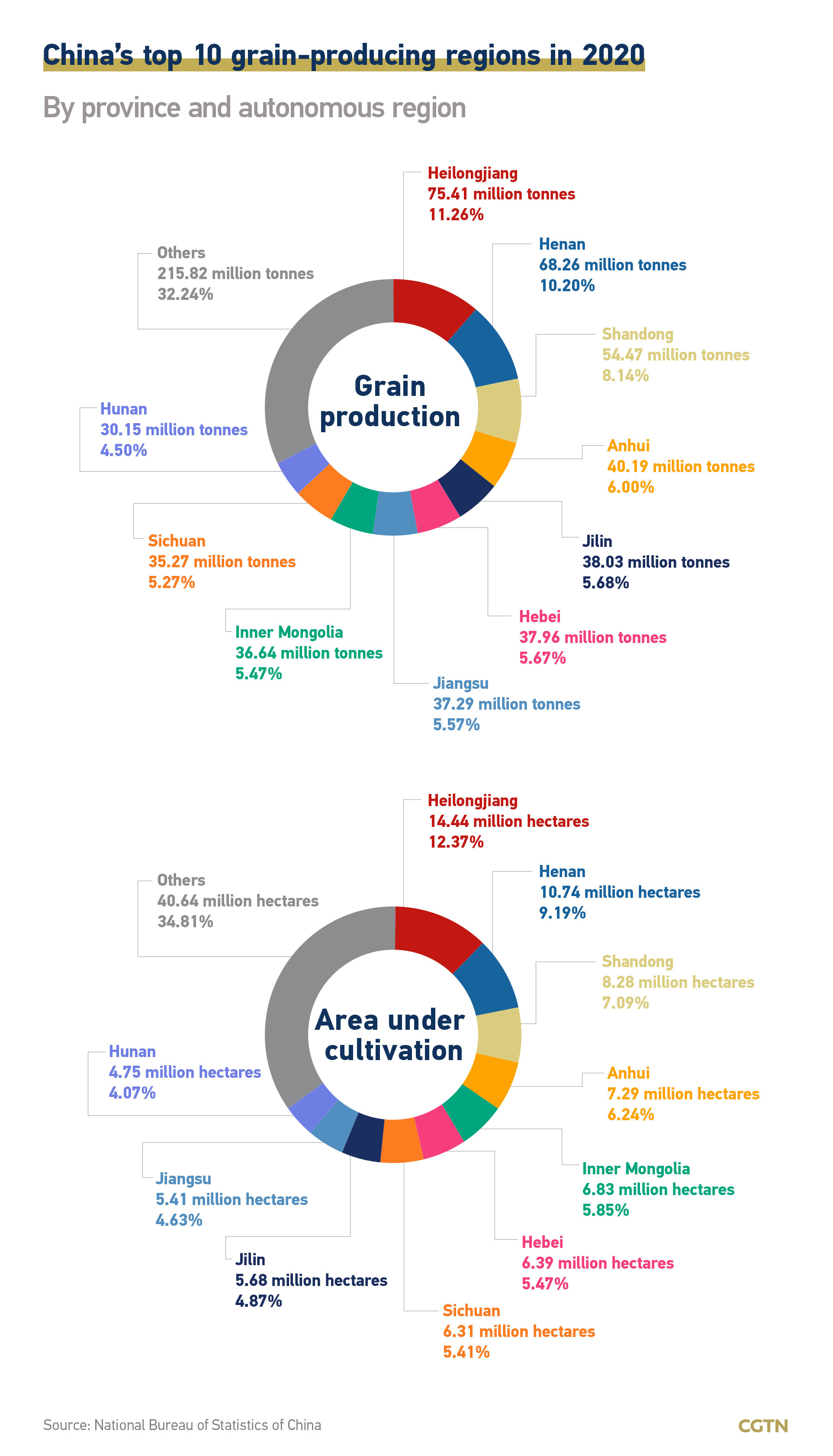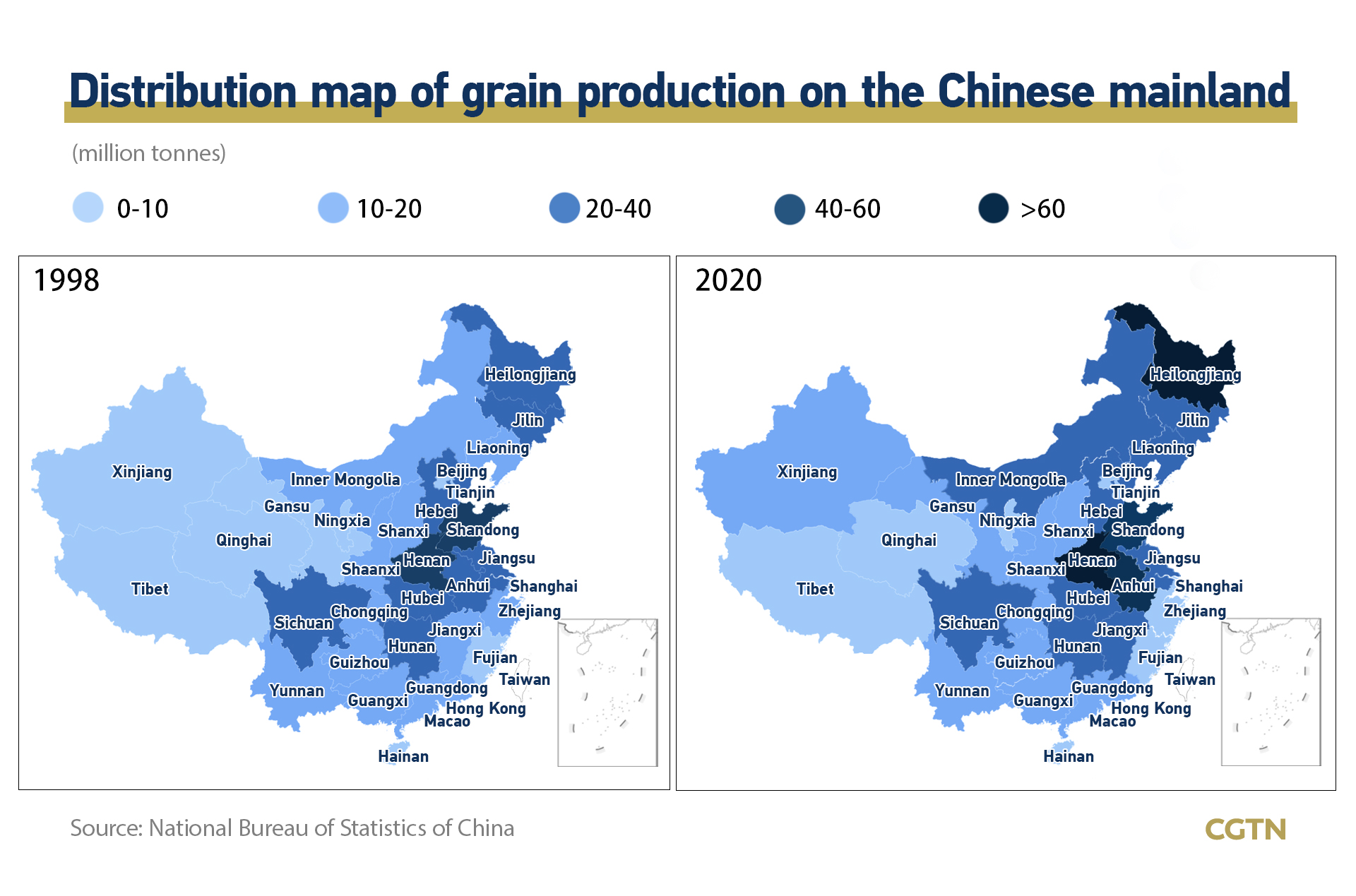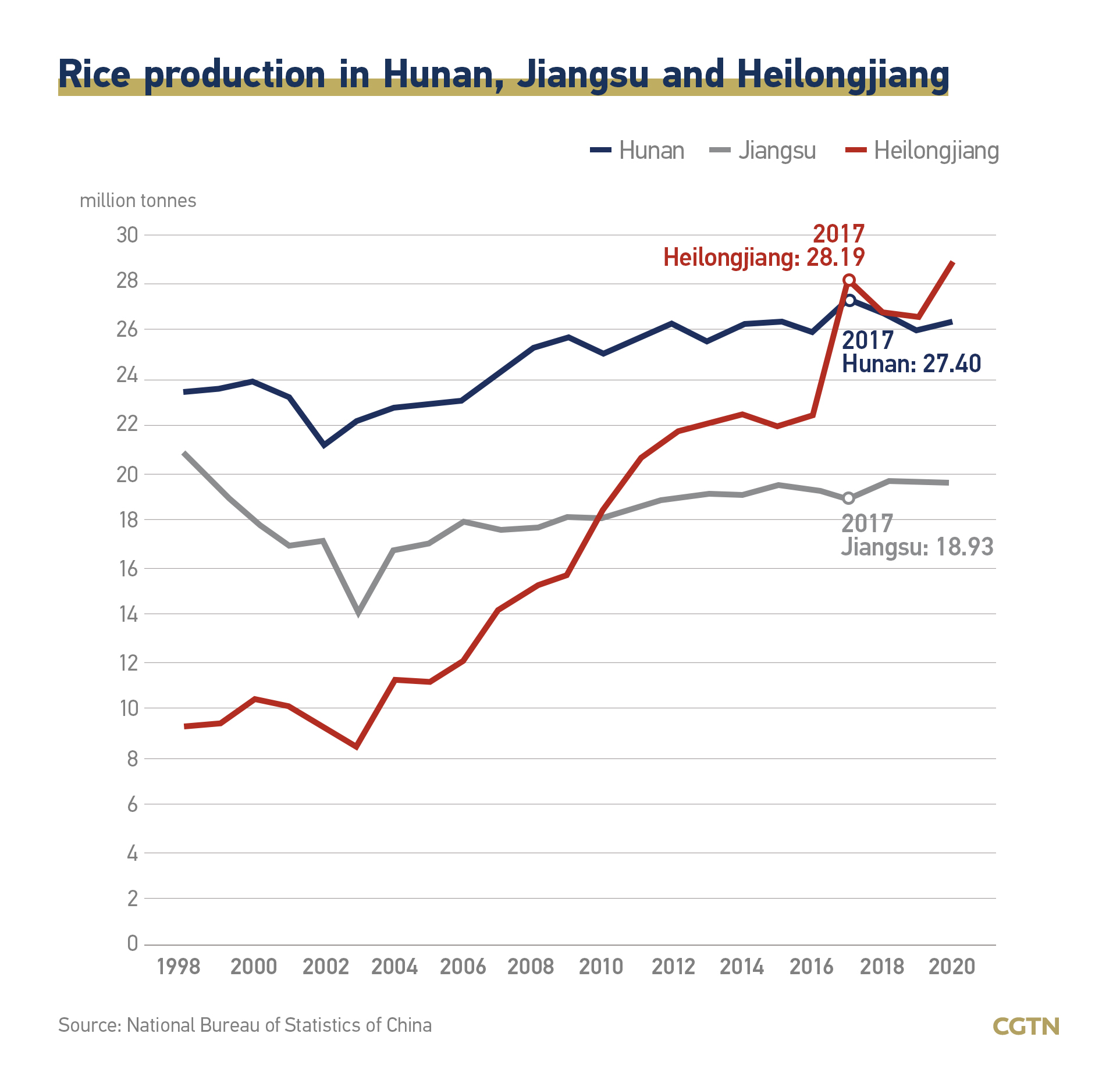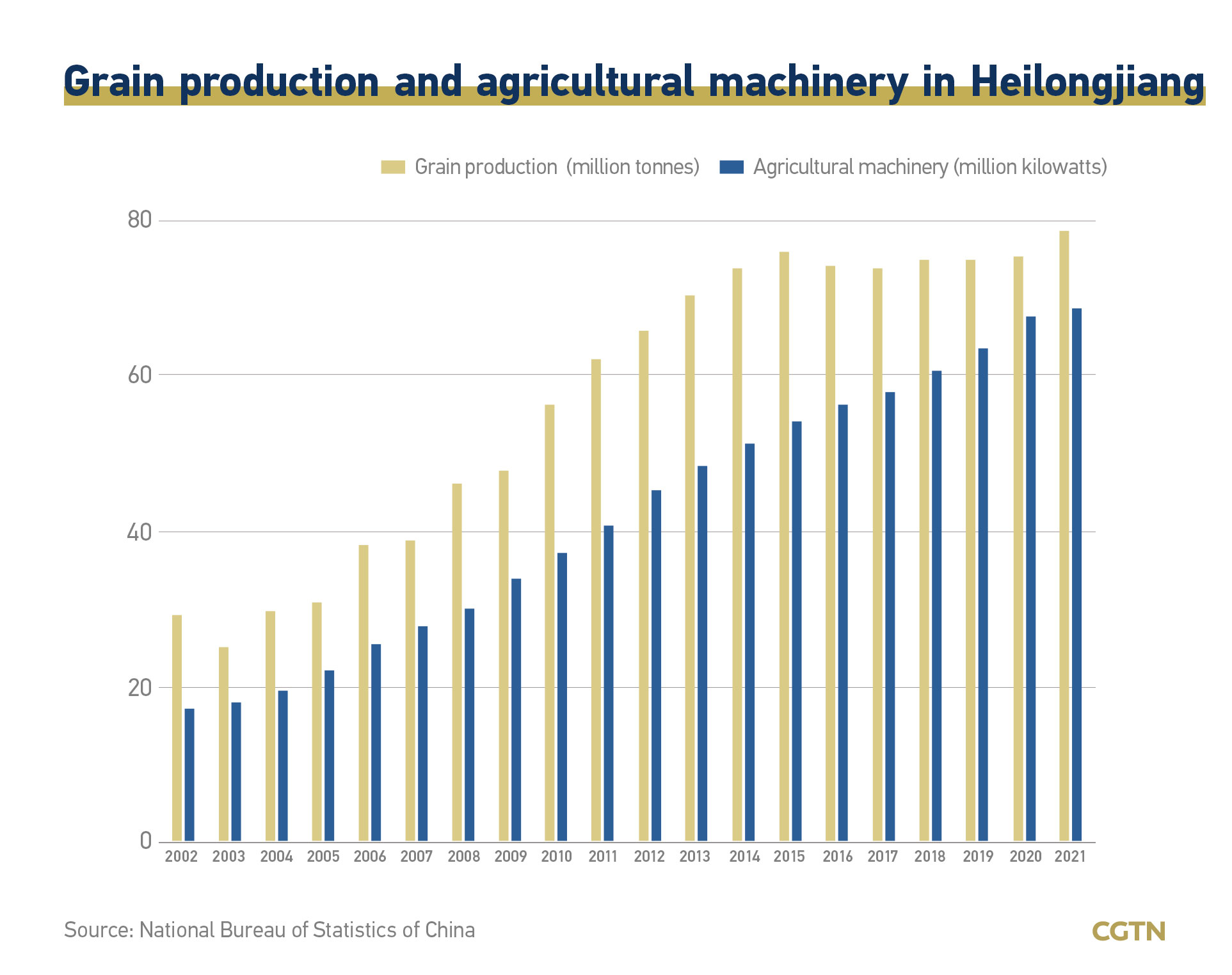China has succeeded in producing 25 percent of the world's grain and feeding 20 percent of the world's population with less than 10 percent of the world's arable land, according to the Food and Agriculture Organization of the United Nations.
The country's great achievement in pursuit of food security is attributed to the fields irrigated by the great rivers. It has the North China Plain resulting from the deposits of the Yellow River, Huaihe River and Haihe River, the Chengdu Plain located in the upper reaches of the Yangtze River and the black-soil belt, which is the most fertile, in northeast China drained by the Songhua River.
Among China's top 10 grain-producing regions in 2020, the Heilongjiang and Jilin provinces and the Inner Mongolia Autonomous Region lie on the black-soil belt. Meanwhile, much of the Henan, Shandong and Hebei provinces and the northern portions of the Anhui and Jiangsu provinces are located on the North China Plain, with Sichuan Province on the Chengdu Plain.

Heilongjiang Province ranked first in both grain production and area under cultivation. The province produced 11.26 percent of China's grain with 12.37 percent of the country's arable land in 2020. Henan Province, Shandong Province and Anhui Province followed Heilongjiang Province as second, third and fourth, respectively, in both grain output and arable area.
Rice, wheat and corn are three staples in China. While Heilongjiang Province produced the most rice and corn, Henan Province had the most wheat, which accounted for 28 percent of the national wheat output in 2020.

Heilongjiang Province was not the top producer from the beginning. More than 2,000 years ago, Chengdu Plain, in the upper reaches of the Yangtze River, was a famous granary. In the Song Dynasty (960-1279), the Jiangnan region to the south of the lower reaches of the Yangtze River, represented by Suzhou in Jiangsu Province, became a critical granary.
During the Ming Dynasty (1368-1644) and the Qing Dynasty (1636-1912), the granary was gradually transferred to Hunan Province and Hubei Province. Each year, nearly 10,000 ships full of grain were transported northward by the Beijing-Hangzhou Grand Canal.

It was not until China's reform and opening up in 1978 that the grain transportation from the south to the north gradually became from the north to the south. Now, the grain output in the south accounts for less than 30 percent of the national output.
According to the National Bureau of Statistics (NBS), Hunan Province was the first in terms of rice production in 1998, followed by Jiangsu Province. The annual rice output in Heilongjiang Province surpassed that of Hunan Province in 2017, and Heilongjiang Province has since become the largest granary.

In Heilongjiang Province, several rivers, such as the Amur River, Songhua River, Mudan River and Ussuri River, ensure abundant water resources for growing crops. The province is also located on the black-soil belt. China has a total area of 1.09 million square kilometers of black soil, with a global share of 12 percent.
The achievement in Heilongjiang's grain production can also be attributed to the Chinese people's fighting spirit. In the early 1950s, hundreds of thousands of young people from all over the country went into the great northern wilderness and turned the wasteland into a granary.
Crop growing skills have also kept pace with the times as large-scale mechanized farming, agricultural aircraft, drones and other technologies take turns. Over the past two decades, the total power of agricultural machinery in Heilongjiang increased almost fourfold, boosting grain production in Heilongjiang to grow nearly threefold, the NBS data showed.
(CGTN's Ou Yue also contributed to the story. Graphics made by Liu Shaozhen, Xing Cheng.)